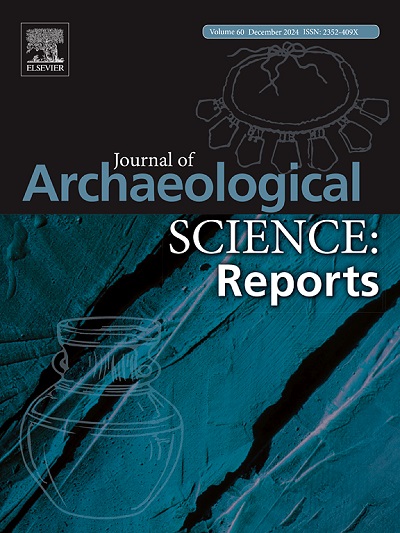Geophysical surveys at Formoso underwater archaeological stilt village in the eastern Amazon region, Brazil
IF 1.5
2区 历史学
0 ARCHAEOLOGY
引用次数: 0
Abstract
Archaeological evidence of pre-colonial indigenous villages are scarce in the Amazon region. Normally, wood decomposes quickly in the ground. However, in the case of stilt houses, the archaeological materials can be well preserved underwater or buried in sediments below waterbodies. The main objective of this work is to advance the understanding about the archaeological stilt village at the Formoso Lake in the Maranhão wetland, eastern Brazilian Amazon. We applied Ground Penetrating Radar (GPR) and Side Scan Sonar (SSS) for this underwater archaeological investigation. The GPR results allowed us to map the lakebed and detect diffraction hyperbolas in the water column, which can be related to wood stilts. The SSS results also helped image the lakebed and identify stilts with a higher spatial coverage compared to GPR. The combination of these two non-invasive geophysical methods allowed us to detect stilts beyond the area found in previous studies. These findings can guide the search and collection of new archaeological materials and, therefore, contribute to preserving this unique cultural heritage.
巴西亚马逊东部地区福莫索水下高跷考古村的地球物理勘测
亚马逊地区殖民前土著村庄的考古证据很少。通常,木材在地下很快就会腐烂。然而,就高脚屋而言,考古材料可以很好地保存在水下或埋藏在水体下的沉积物中。这项工作的主要目的是加深人们对巴西亚马逊东部马拉尼昂湿地福莫索湖考古棚屋村的了解。我们在这次水下考古调查中使用了地面穿透雷达(GPR)和侧扫声纳(SSS)。GPR 结果使我们能够绘制湖床图,并探测到水体中的衍射双曲线,这可能与木跷有关。与 GPR 相比,SSS 的结果也有助于对湖床进行成像,并以更高的空间覆盖率识别高跷。这两种非侵入性地球物理方法的结合使我们能够探测到超出以往研究发现范围的高跷。这些发现可以为寻找和收集新的考古材料提供指导,从而有助于保护这一独特的文化遗产。
本文章由计算机程序翻译,如有差异,请以英文原文为准。
求助全文
约1分钟内获得全文
求助全文
来源期刊

Journal of Archaeological Science-Reports
ARCHAEOLOGY-
CiteScore
3.10
自引率
12.50%
发文量
405
期刊介绍:
Journal of Archaeological Science: Reports is aimed at archaeologists and scientists engaged with the application of scientific techniques and methodologies to all areas of archaeology. The journal focuses on the results of the application of scientific methods to archaeological problems and debates. It will provide a forum for reviews and scientific debate of issues in scientific archaeology and their impact in the wider subject. Journal of Archaeological Science: Reports will publish papers of excellent archaeological science, with regional or wider interest. This will include case studies, reviews and short papers where an established scientific technique sheds light on archaeological questions and debates.
 求助内容:
求助内容: 应助结果提醒方式:
应助结果提醒方式:


